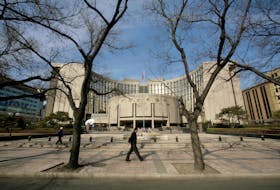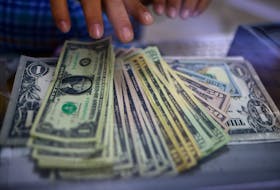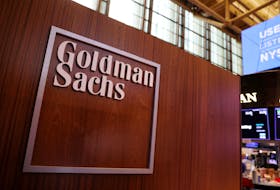SHANGHAI (Reuters) - China is likely to keep a key loan rate steady next week, but a cut is expected by mid-September after a policy review by the U.S. Federal Reserve, as Beijing steps up efforts to lower borrowing costs to support growth.
With global central banks shifting to a more accommodative monetary stance over recent months to fight growing economic pressure, traders and analysts say China will likely continue to provide stimulus as a trade dispute with the United States intensifies.
Analysts say a cut in the People's Bank of China's (PBOC) medium-term lending facility (MLF), which reflects commercial banks' long-term liability cost, will likely signal a reduction in the new revamped Loan Prime Rate (LPR), launched this week. However, they don't expect a cut in the MLF rate on Monday when the next batch of loans mature.
The MLF now acts as a guide for the LPR, which is set on the 20th of each month.
The LPR was reduced by 6 basis points on Tuesday, following its weekend designation by the PBOC as the new lending benchmark for all fresh loans to households and businesses.
The central bank is "likely to cut the one-year MLF rate by around 10 basis points before September 20," said Lu Ting, Greater China economist at Nomura in Hong Kong.
"We thus expect LPRs to drop by around 10 bp on September 20."
With a batch of 149 billion yuan ($21.01 billion) worth of one-year MLF loan due to mature on Monday, markets widely expect the central bank to keep the interest rate on hold before making the cut in the next rollovers.
"The latest LPR has already been lowered. (China's) central bank is likely to gauge August economic data and whether the Fed will cut its interest rate again in September before making the reduction," said a trader at a Chinese bank.
Markets widely expect the Fed, which last month reduced rates for the first time since the global financial crisis, will deliver another rate cut at its Sept.17-18 policy meeting.
Over the past two years, the PBOC has on several occasions adjusted its market rates after the Fed decision, although the Governor Yi Gang has said that any cuts to interest rates will depend on economic conditions.
A second trader at a Chinese bank said interest rate swaps (IRS)
The new one-year LPR
Despite economic growth nearing 30-year lows, analysts say China's central bank has been reluctant to cut interest rates system-wide due to fears of adding to a mountain of debt and fueling property bubbles. It last cut the one-year lending rate in 2015. And it explains why existing loans including mortgages are still exempt from the new benchmark scheme.
Ji Tianhe, head of FX and local market strategy for global markets at BNP Paribas in Beijing, said the PBOC could either lower the MLF rate to guide the new LPR down or suppress the spread between the two rates.
"We see good chances for the MLF to fall marginally by 5 basis points each quarter in the remainder of this year, with one in September and another cut in the fourth quarter ... In this case, one-year interest rate on LPR is likely to finish the year at 4%," Ji said.
The one-year MLF rate
Two batches of such MLFs are set to expire ahead of the next LPR announcement in September, with one tranche of 176.5 billion yuan maturing on Sept.9 and another 265 billion yuan due on Sept.17.
(Reporting by Winni Zhou and John Ruwitch; Editing by Shri Navaratnam)









